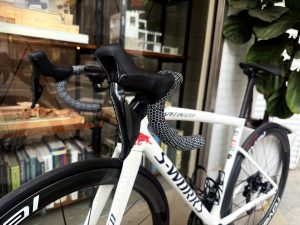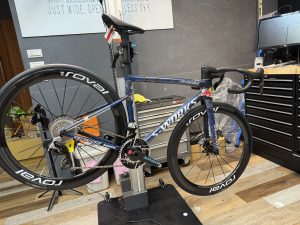一直的想法是非要重踩才能以更快的速度到達目的地。但在中長程的賽車中,能承受多久高強度的踩踏呢?下面的文章告訴我們另一種訓練的目標跟方法。
Technique: Get faster by riding slowly
Are you a pupil of the ‘no pain, no gain’ school of training? New research says you’ll get fitter faster if you take it easy.
Sounds good doesn\’t it? But we\’re not quite saying you can get fitter by sitting on the sofa. The trick is to ride in the least taxing of your training zones, the levels of effort that actually have an effect on your fitness. Let\’s kick off by taking a look at them.
What are training zones?
Training zones are different levels of exertion designed to improve your fitness. What you might not realise is that it’s Zone 1, the easiest level, and not flat-out Zone 3 where you should be spending most of your ride time.
How are the training zones defined?
Zone 1: This is the endurance base from 60% of your maximum heart rate to around 78-80%. This zone builds endurance, the economical use of fats and carbohydrates for fuel and allows good technique to be practised. You\’ll want to spend up to 80% of your time here.
Zone 2: Where pace is moderately hard, where lactate is created from an increased use of carbohydrate but it is not hard enough to cause fatigue suddenly. This zone occurs around 79-89% of your maximum heart rate and it helps athletes judge pace, convert lactate and move at higher velocities. Aim for around 10-12% of your weekly workouts here.
Zone 3: The high intensity lactate accumulation zone is above 89-90% of your maximum heart rate. This is peak effort stuff that hurts. It provides a maximal stimulus that is, or simulates, competition or above competition pace. Spend no more than 10% of your training time here.
How to work out your maximum heart rate
To make sure you ride in the right zone, you’ll need to work out your max heart rate.
Time trial effort varies between riders but it is approximately 88-91% of your maximum heart rate for a 10-mile tiem trial, and 85-88% for a 25-miler.
To get an estimate of your maximum heart rate, you need to divide your average heart rate over 10 miles, eg 165, by 0.88 and 0.91 (187.5 and 181) and do the same for your 25-mile tiem trial average, eg 160, using 0.85 and 0.88 (188 and 181).
The average maximum heart rate of all four figures is 184, and this can then be used to calculate your three training zones:
- Zone 1: less than 78-80% of your maximum heart rate (<147)
- Zone 2: 80-88% of your maximum heart rate (149-160).
- Zone 3: above 88-90% of your maximum heart rate (>161)
How does this apply to me? I’m not a time trial specialist!
Yes, it sounds too good to be true: ride slowly to go faster. But a recent study has added support to sports scientists’ claims that spending more time exercising comfortably, rather than eyeballs-out, delivers the best results.
Researchers at The European University in Madrid spent five months studying endurance athletes and found that those who did 80% of their training in Zone 1 and only 10% in Zone 2 improved times over a set distance by 36 seconds more than those spending 65% of their training time in Zone 1 and 24% in Zone 2. Both groups did around 8% of their weekly time in the top end Zone 3.
All the athletes, whatever their Z1, 2 or 3 proportions, got faster over the five months, but the group training smarter (less effort with more precise Z1 work) got 6.9% better, while the overzealous athletes got 5.3% better. Would you not like to get 1.6% faster but do fewer work wasted sessions?
Why excessive high intensity miles should be avoided
The scientists behind this study also think that their findings turn on its head the age old theory of junk miles – that lots of low intensity training is, basically, a waste of time. Instead, it could be an excess of the harder stuff that should be avoided.
“Our data suggest that an older concept of ‘junk miles’ applies not to relatively low-intensity training but to moderately high-intensity training,” said the researchers. It makes sense: moderately hard training is difficult to recover from, but not hard enough to stimulate further adaptation.
Of course, the study isn’t saying that simply pootling about will turn you into Mark Cavendish. You will still need to push yourself well out of your comfort zone from time to time and you can’t wave goodbye to hill reps and sprints just yet. But if you’re serious about improving your time-trial best or bagging a sportive personal best, make sure that you’re spending enough time in Zone 1 between the harder sessions. …
All you need to do now is to strap on a heart rate monitor and find your comfort zone!






